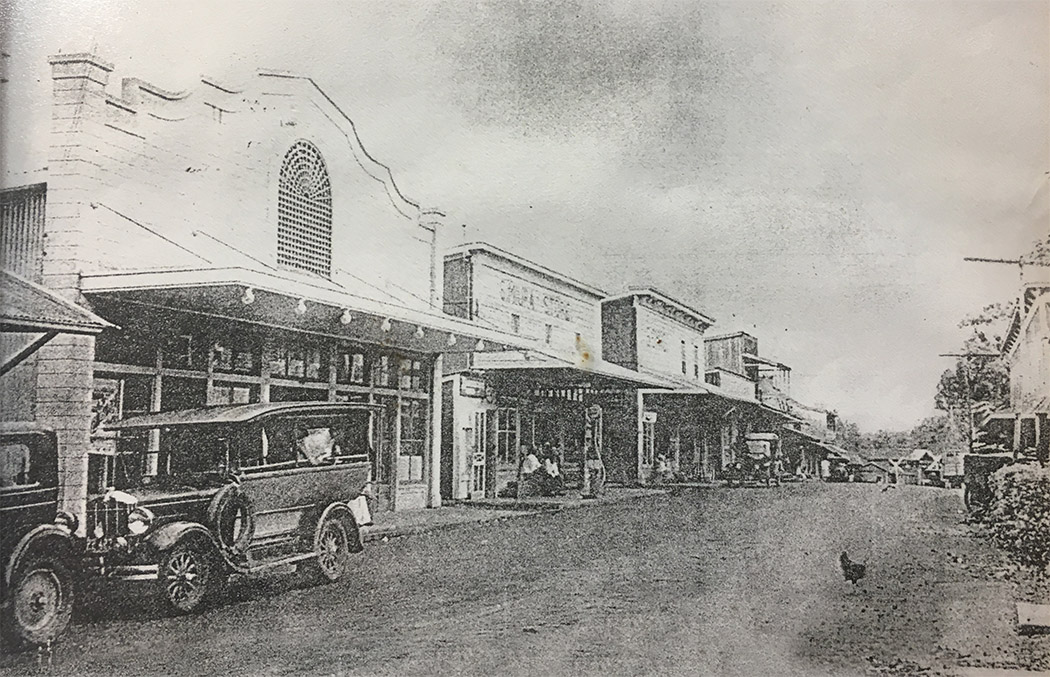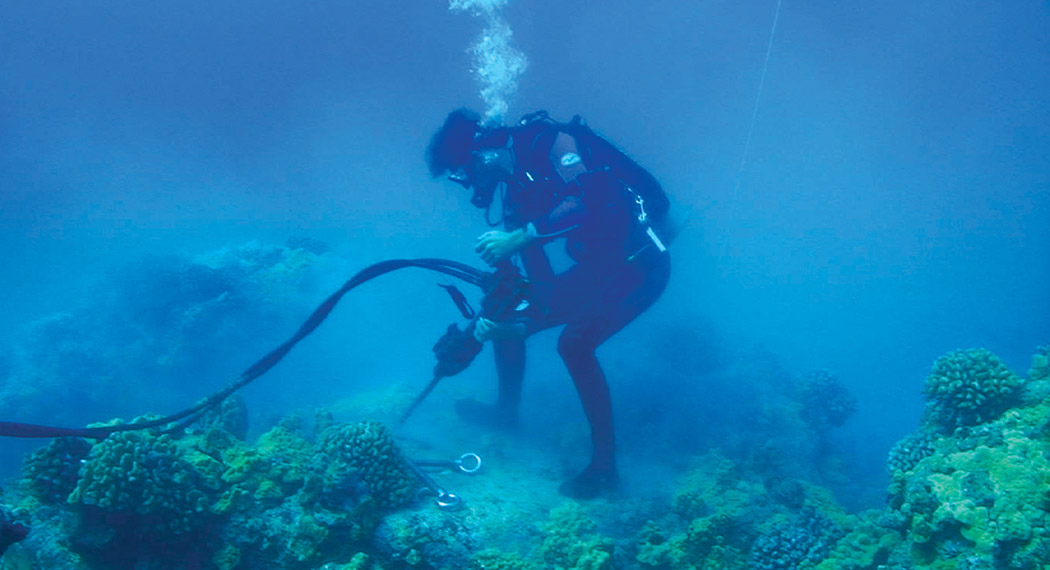
Statewide Boat Mooring Program Boasts Kona Roots
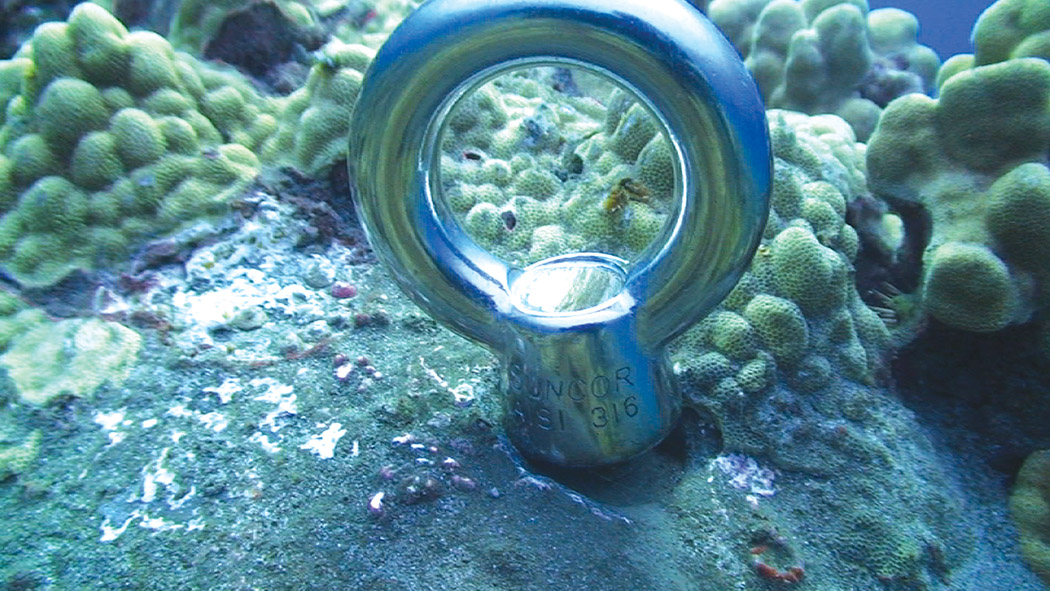
By Fern Gavelek
From time to time, something is done purely because it is the pono (right) thing to do. How the statewide day-use mooring (DUM) system came to be is one of them. The strategically placed moorings protect marine coral from being lethally struck by boat anchors.
It’s an inspiring story about the collaboration of local dive companies, state agencies, the University of Hawai‘i, and the legendary rock band, The Grateful Dead. After nearly a decade of effort developing mooring technology, raising funds, overcoming bureaucratic hurdles, and actually doing the installation, the day-use mooring system was created in the 1980s in Kona.
Mission to Preserve Kona’s Coral Reefs
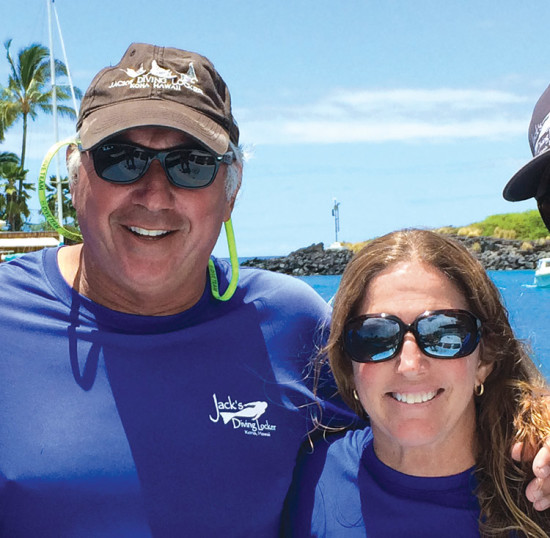
The driving force initiating the effort was a young couple that moved to Kona from O‘ahu in 1982 and today are the owners of Jack’s Diving Locker.
The two certified divers, Jeff and Teri Leicher, immediately noticed how healthy the coral was in Kona compared to the heavily used reefs on O‘ahu. “The Kona area was vast and virtually untouched,” remembers Teri.
The couple was dismayed, however, about the practices they observed when out on Kona dive charters. Boat operators were dropping anchors on the ocean floor and it was damaging coral. Some boaters had mooring blocks, but these devices would move during a storm. This movement prevented coral from growing, resulting in barren areas around the blocks.
Recognizing the need to protect Kona’s coral, Teri approached her father, an oceanographer, for ideas on effective mooring technology. George A. Wilkins was a marine scientist with the University of Hawai‘i (UH) Department of Geophysics and also on the board with UH’s Sea Grant; the latter supports ongoing coastal and marine research and projects. After some research, George learned John Halas had pioneered a mooring pin method in 1981 being used at the Key Largo National Marine Sanctuary in Florida. The technology involved drilling into the seafloor and cementing permanent anchors.

Teaming up with Ray Tabata at Sea Grant, George and the Leichers modified the Florida technology to work in Hawai‘i’s substrate of lava and bluestone in 1986. They developed the Hawaiian Eye, an 18-inch steel bolt with a loop-shaped “eye” at the top. Installation involved using a hydraulic drill to make an 18-inch hole into the ocean floor and cementing the bolt using a syringe filled with marine-grade cement. Each mooring had two pins, spaced three-to-four feet apart. Stainless steel cable or chain from each eyebolt connected to a mooring ring that floated in the center above and between the two bolts. A line extended from the top of the mooring ring to a subsurface buoy, making the mooring accessible.

Next, the team solicited funding for the mooring effort while contacting a variety of state agencies for oversight. There were endless meetings and discussions involving jurisdictional responsibility and the need for an umbrella agency. The late Jerry Garcia of the Grateful Dead, who was a frequent customer at Jack’s Diving Locker, lent his support of the effort by favorably testifying for its approval at a state hearing.
Undeterred by red tape, the team demonstrated the hydraulic drilling system that would be used for installing the Hawaiian Eye bolts. The drilling—which is like an underwater jackhammer operated by a diver—was used to install swim buoy anchors in Kailua Bay and replaced existing permitted and antiquated mooring anchors. The Department of Transportation Harbors Division gave its full support for the installation.
With the help of the now-disbanded Kona TORCH (The Ocean Recreation Council of Hawai‘i), permission was secured to install the Hawaiian Eye day-use moorings at 46 sites off the Kona coast in 1989. The Grateful Dead’s Rex Foundation donated $10,000 to pay for the system’s buoys.
“The only reason we started this whole process was to protect the coral,” notes Teri. “So once we got permission to install the moorings, we made it known they were for the public to use, both private and commercial boats.”
Day-Use Mooring Program Expands
In 1998, the state legislature passed Act 306, requiring that a system of day-use moorings be established along the 150-mile West Hawai‘i coast and appropriated funds to pay for initial mooring hardware and buoys. Today, there are almost 100 DUMs along the Kona-Kohala coast, stretching from Kealakekua Bay to Black Point, which is north of Pu‘ukoholā Heiau in North Kohala. There are no moorings yet on the island’s east side, though there have been discussions of installing DUMs outside Hilo Harbor.
Statewide, there are 220 day-use moorings according to malama-kai.org. Malama Kai Foundation is a nonprofit organization dedicated to ocean stewardship, providing public education and opportunities for community service.
Malama Kai Maintains Effectiveness of DUMs

Overseeing the never-ending challenges of operating the DUM program is the Malama Kai Foundation Day-Use Mooring Working Group. Current DUMWG members are ocean sports representatives from each of the islands. The working group coordinates each island’s volunteers and equipment, regular inspection and maintenance of moorings, and installation of new moorings. It also collaborates with the Hawai‘i Department of Land and Natural Resources (DLNR) and other state and local agencies regarding mooring issues.
A member of the working group, Teri serves as a liaison with DLNR. She is involved with advocating the legislature for funding, as each mooring installation costs around $1,500 just for the hardware. Teri travels statewide for public hearings and pushes paperwork through a variety of state and federal agencies: the Office of Hawaiian Affairs, Army Corp of Engineers, NOAA, and DLNR’s Division of Boating and Ocean Recreation (DOBOR).
“With the many steps involved, it takes a village to do a mooring,” notes Teri. She says a challenge in adding moorings can be overcoming the incorrect perception that adding a mooring brings more boats to a location. “We add moorings where boats are already going and coral is being damaged by dropping anchor. The moorings are simply protecting the coral,” she emphasizes.
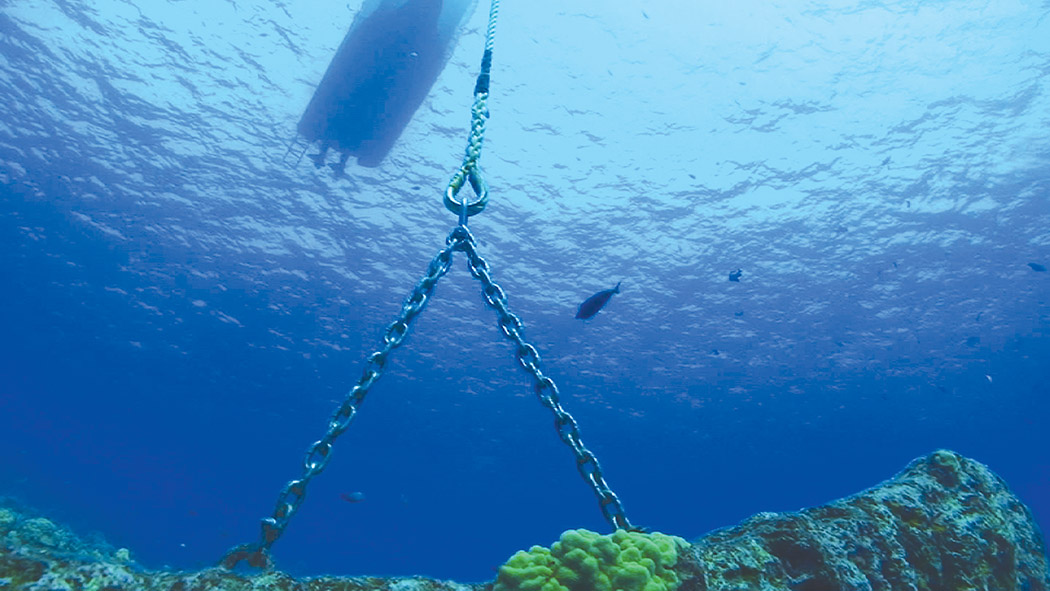
Boater Cooperation Is Important
According to the DOBOR website, day-use moorings are available on a first-come, first-served basis for recreational and commercial vessels. It reads, “If the day-use mooring you are looking for is occupied, anchor in sand, drift while fishing or snorkeling/diving, or use a boat brake.”
While DUMs are geared to accommodate boats in moderate weather conditions, there are rules governing their use that are administered by DLNR. Mainly, a day-use mooring is limited to 2.5 hours when another vessel is waiting to use that mooring buoy. Some of the more popular dive sites have more than one DUM, which are placed far enough away from each other to provide for better dive site management, including keeping boat traffic away from divers. Permits are not required to use a DUM.
“I hope and believe the state government will begin to establish carrying capacities for our underwater resources, limit use by granting (or withholding) permits, and provide sufficient moorings and maintenance to accommodate users so there is no need to drop anchors,” states Jeff Leicher. “Coral has enough threats to worry about—climate change, sunscreen, etc.—without having to survive a carelessly thrown anchor.”
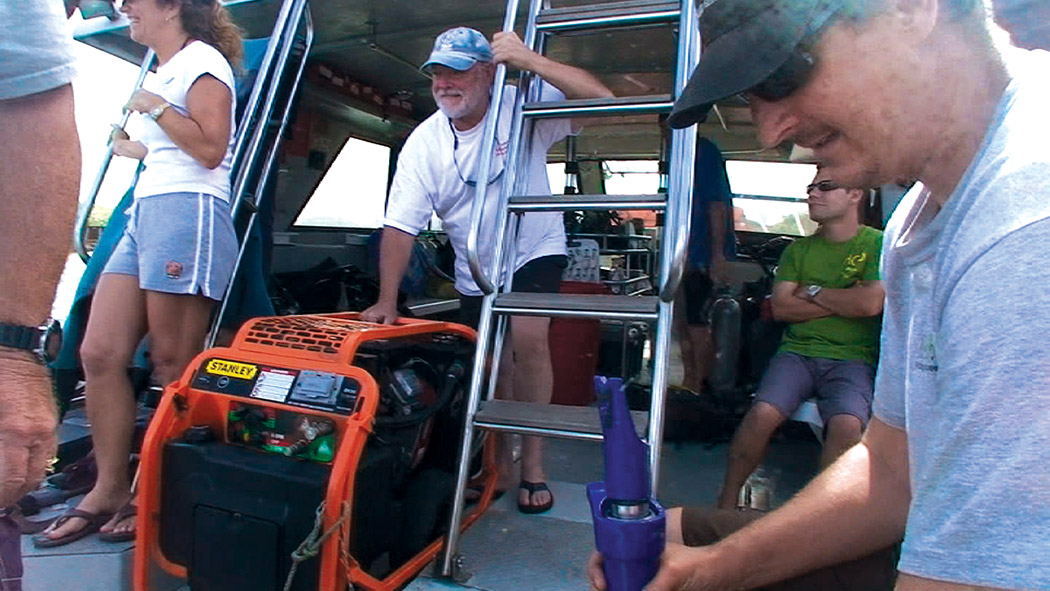
Statewide, DUMs are maintained by Malama Kai. DUM’s working group collaborated with DLNR to develop a 10-year plan that includes a DUM installation and maintenance manual. This effort includes training divers to properly do installations. To help the working group keep on top of things out in the ocean, DUM users are encouraged to inspect a mooring upon use for any deterioration and report issues.
“I encourage boaters to take a look at the condition of any mooring their boat ties off to,” details Jeff. “If they see a worn shackle, chain, or line, point it out. We all need to help keep the moorings and the boats that use them safe.”
Instructions for inspecting moorings, proper techniques for securing vessels, and usage rules are detailed in Day-Use Mooring guidebooks available at malamakaifoundation.org. The books also detail what each dive site offers.
These guidebooks are especially helpful to new island boaters. According to Ed Underwood, DOBOR boating administrator, new Hawai‘i boaters, including boaters coming from a different state, are not specifically notified about Hawai‘i’s DUM program. To find out, he says via email, “They need to review the rules.” The DLNR posts rules and info at dlnr.hawaii.gov/dobor/day-use-moorings/. Also, information on DUMs appears in the Hawaii Boating Law Basic (HBLB) manual. The manual is provided to all online and statewide boating safety course providers. The HBLB manual is required reading for boaters requesting a DOBOR Boater Safety Education Card—completion of a boating safety course is required to operate a motorized vessel in state waters.
In addition, mariners can find out about Hawai‘i’s DUM through DOBOR’s ‘Ike Kai, a training curriculum developed in 2016 for commercial and tourism boaters at dlnr.hawaii.gov/makaiwatch/files/2015/12/Ike-kai-DOBOR.pdf.
Support DUM Effort and Help Our Reefs
Anchor damage is a key threat to coral reefs worldwide, according to the International Coral Reef Initiative and the US Coral Reef Task Force. Hawai‘i’s day-use mooring system is part of the solution to help our local coral reefs, which are under siege by ocean warming, ocean acidification, and land-based pollution runoff.
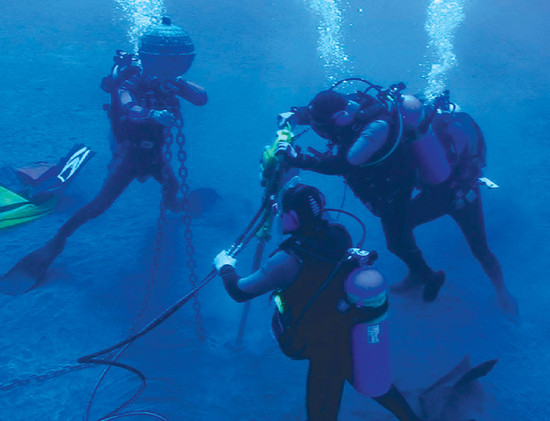
Backing up the need to protect Hawai‘i coral is state law. According to the State of Hawai‘i Division of Aquatic Resources website, “It is unlawful to take, break or damage, with any implement,” any reef corals. That includes any intentional or negligent activity.
Jeff encourages anyone who sees a boater damaging coral in Hawai‘i with an anchor to report it to DLNR’s Division of Conservation and Resources Enforcement (DOCARE) hotline: 808.643.3567 (DLNR). Infractions can also be reported via a new Tip411 app downloadable on iTunes or Google Play: find details at dlnr.hawaii.gov/docare/.
“Malama Kai received funding that was part of a fine levied by the state after an uncaring boater’s anchor chain destroyed a large swath of coral on Maui,” recalls Jeff. “The money was used for 60 new moorings statewide. If you see something, say something.”
Most DUM funding comes from donations by generous divers and snorkelers who visit and appreciate Hawai‘i’s reefs.
“The process of installing and maintaining the DUM system is ongoing,” emphasizes Teri. “It’s been in the works for over three decades. We continue to work with the state and DLNR to overcome hurdles in protecting the reef and our marine resources.” ❖
Photos courtesy of Jack’s Diving Locker
For more information: malamakaifoundation.org
Mahalo Jack’s Diving Locker – Ocean Story Sponsor
